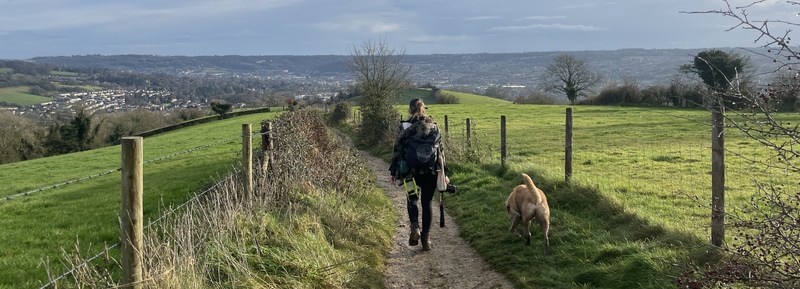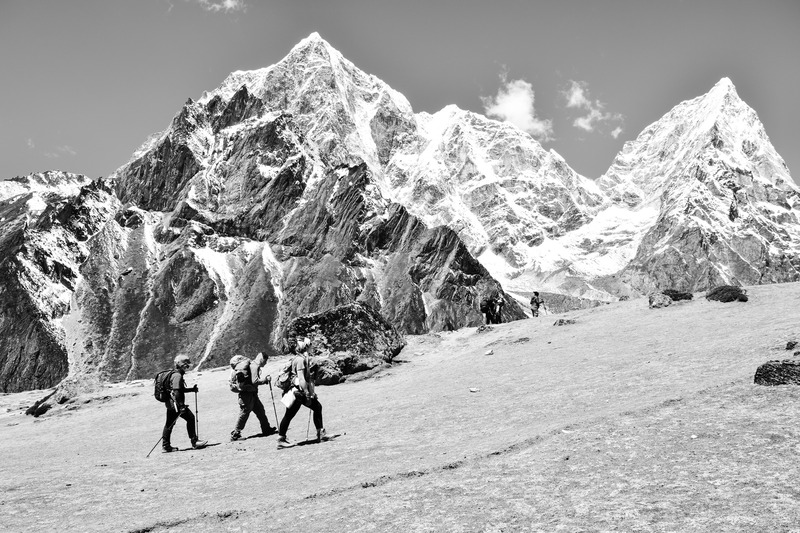Putting a deadline on a goal can often help you reach it, but what happens when you have zero control over the timeline? Or, maybe you don’t even know when the deadline is?
Meet Caroline. She’s a moderately salty sweater, with a low-to-moderate sweat rate. She’s new to running, recently completed her first half marathon and is now training for a full. With the goal of summiting Mount Everest in May 2026, she’s laid out a series of challenges to move her training along, including the UK Three Peaks Challenge in 24 hours.
But this commendable multi-year Big Hairy Audacious Goal has an added layer of time sensitivity, as Caroline is determined to experience the top of Everest with all five senses.

Since being diagnosed with Usher syndrome, she’s realised her deteriorating sight and hearing will only continue. While it was tempting to let this dissuade her from chasing big dreams, she said her Everest Base Camp trek last year instilled a quiet 'what if?' in her mind.
“I loved the experience. It was always a dream to summit – a fantasy – but it was too expensive, too dangerous. But, then I met some people who were on their way to the summit, and I started to whisper “what if”.
Those words quickly became louder than the challenges involved and motivated her to formulate a plan.
"A filming production team got interested, and they agreed to document the journey. So, I want to use this chance to bring representation about deaf-blind people like me because I think there’s a very strong stereotype about blind people – you know, they usually have dark sunglasses with a cane walking like a robot. A lot of people say that I don’t look blind, but I am blind. A lot of people like me experience misunderstandings or bad incidents. Telling my story while I climb Everest will be the loudest ring of representation."
She could do the trek 'normally' with a sherpa, but that’s underestimating Caroline’s big ideas. She’s connected with a community in Nepal and plans to involve a local in her journey, ideally one with similar struggles.
“I’m hoping to go to Nepal and meet some sherpas… maybe find that person who will be interested in climbing with me to Everest, someone like me, deafblind. I know it’s a global issue, so it will be good to have a local person involved.”

Why not add an extra challenge if it means making an extra impact? Caroline’s no stranger to added challenges, as even just going out for a run requires planning ahead.
“I need a sighted guide to help me with running because I have tunnel vision… I sometimes wear a vest that says I’m a blind runner if a guide isn’t available and I feel comfortable, and if I know it’s a quiet path.”
Since she’s new to running and fueling for sports performance, we had a chance to talk through The Three Levers of race nutrition (i.e. carbohydrate, sodium and fluid) and how to use them for her milestone events, as well as her big climb.
“I’m quite new and I don’t really know that much yet. I do have a coach who is looking after me holistically… I haven’t gotten cramps, I remember my skin feeling really sticky after my first 10k, but I haven’t noticed that other times. I do have hip flexor pain sometimes after running.”
Otherwise, she’d describe herself as pretty healthy. She’s in her final year of a PhD in the UK studying computer science with a focus on tactile pictures for visually impaired people. And in her little spare time, she’s been taking on increasingly longer runs and training at a local climbing gym.
“I’m taking it in small steps, it’s a big project.”
Let’s be real – it would be an accomplishment for anyone. But Caroline’s reasoning for tackling this and the tenacity with which she’s doing so gives it that much more meaning and impact. And when she reaches the top of the mountain, she knows it will be 'the loudest ring' of determination, awareness and hope, even if she can only feel it.
Check out the Deaf Blind Everest Project to learn more about Caroline's story.